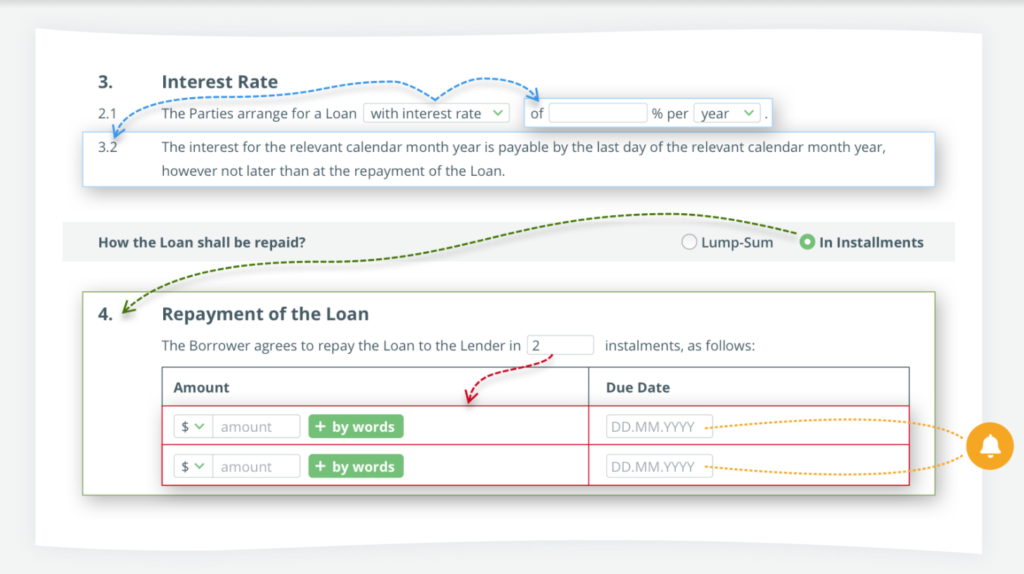Who uses Document Automation at your Organization? How, and Why?
Who uses Document Automation at your Organization? How, and Why?
As noted in last week’s article, Document Automation is prevalent in just about any office setting. Every team or department in an organization uses some form of document automation to perform their job functions, whether they are aware of it or not. Some of these applications are very basic forms of automation, such as a mail merge to print, or email multiple files, but more and more, teams are beginning to see the benefits of using more complex forms of automation.

Legal
Legal teams are probably the best recognized users of document automation technology. Documents in legal department, especially contracts, require strict formulaic language that tend to be consistent from document to document often requiring minimal yet and precise alterations. Automating the drafting of such documents reduces the attention needed to draft standard legal language, allowing the document drafters to spend more time on more interesting and important legal concepts.
Finance
Similar to Legal teams, Finance teams often create standardized documents on a regular basis, changing very little in form, or calculations, typically it is only values that change. Financial data is generally stored on spreadsheets, and one of the greatest benefits of document automation for Finance teams is that a good document automation tool can automatically populate financial documents with values imported from a spreadsheet, or from multiple spreadsheets. Of course, this is preferrable to manually adding data, reducing opportunity for error.
Sales
The benefit of document automation to sales teams hangs somewhat in between the Legal and Finance teams. Although the creation of some sales documents can be streamlined with a strong document automation tool, many of the documents used are shared by the Legal and Finance teams (e.g., invoices, contracts, etc.). A tool that allows sales teams to draft these documents according to organization standards, and make sure they are circulated for approval through well-defined workflows, helps to ensure that deals close quickly, and are compliant with company and regulatory standards.
Human Resources
HR departments are almost always inundated with documentation. Businesses usually have some type of documentation of every stage of an employee’s career, from hiring and onboarding, career advancement, and departure. Obviously, there is a lot of standardization for these forms, and automating the drafting of these documents would save valuable time, allowing teams to spend more time focused on people, and not simply employee’s paperwork.
These are only a few of the teams in an organization that benefit from Document Automation. Procurement, Information Technology, Audit, and Facilities Management teams all find ways to boost productivity and efficiency through document automation.
One of the most valuable aspects of a strong document automation tool is that it can create a unified platform for everyone in an organization to share information and increase transparency. Flexible security settings can give everyone within a business an overview of what is going on in any given department, yet still protect sensitive information. For more information about how your team can benefit from Document Automation, you can visit Legito’s Learning Academy.
As noted in last week’s article, Document Automation is prevalent in just about any office setting. Every team or department in an organization uses some form of document automation to perform their job functions, whether they are aware of it or not. Some of these applications are very basic forms of automation, such as a mail merge to print, or email multiple files, but more and more, teams are beginning to see the benefits of using more complex forms of automation.

Legal
Legal teams are probably the best recognized users of document automation technology. Documents in legal department, especially contracts, require strict formulaic language that tend to be consistent from document to document often requiring minimal yet and precise alterations. Automating the drafting of such documents reduces the attention needed to draft standard legal language, allowing the document drafters to spend more time on more interesting and important legal concepts.
Finance
Similar to Legal teams, Finance teams often create standardized documents on a regular basis, changing very little in form, or calculations, typically it is only values that change. Financial data is generally stored on spreadsheets, and one of the greatest benefits of document automation for Finance teams is that a good document automation tool can automatically populate financial documents with values imported from a spreadsheet, or from multiple spreadsheets. Of course, this is preferrable to manually adding data, reducing opportunity for error.
Sales
The benefit of document automation to sales teams hangs somewhat in between the Legal and Finance teams. Although the creation of some sales documents can be streamlined with a strong document automation tool, many of the documents used are shared by the Legal and Finance teams (e.g., invoices, contracts, etc.). A tool that allows sales teams to draft these documents according to organization standards, and make sure they are circulated for approval through well-defined workflows, helps to ensure that deals close quickly, and are compliant with company and regulatory standards.
Human Resources
HR departments are almost always inundated with documentation. Businesses usually have some type of documentation of every stage of an employee’s career, from hiring and onboarding, career advancement, and departure. Obviously, there is a lot of standardization for these forms, and automating the drafting of these documents would save valuable time, allowing teams to spend more time focused on people, and not simply employee’s paperwork.
These are only a few of the teams in an organization that benefit from Document Automation. Procurement, Information Technology, Audit, and Facilities Management teams all find ways to boost productivity and efficiency through document automation.
One of the most valuable aspects of a strong document automation tool is that it can create a unified platform for everyone in an organization to share information and increase transparency. Flexible security settings can give everyone within a business an overview of what is going on in any given department, yet still protect sensitive information. For more information about how your team can benefit from Document Automation, you can visit Legito’s Learning Academy.
More Weekly Articles



















